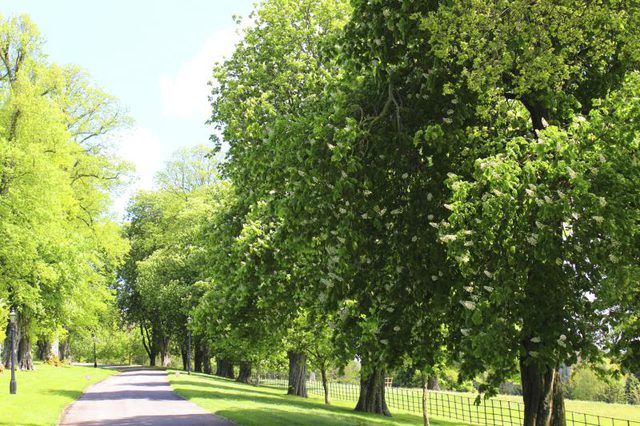Bulbs
Flower Basics
Flower Beds & Specialty Gardens
Flower Garden
Garden Furniture
Garden Gnomes
Garden Seeds
Garden Sheds
Garden Statues
Garden Tools & Supplies
Gardening Basics
Green & Organic
Groundcovers & Vines
Growing Annuals
Growing Basil
Growing Beans
Growing Berries
Growing Blueberries
Growing Cactus
Growing Corn
Growing Cotton
Growing Edibles
Growing Flowers
Growing Garlic
Growing Grapes
Growing Grass
Growing Herbs
Growing Jasmine
Growing Mint
Growing Mushrooms
Orchids
Growing Peanuts
Growing Perennials
Growing Plants
Growing Rosemary
Growing Roses
Growing Strawberries
Growing Sunflowers
Growing Thyme
Growing Tomatoes
Growing Tulips
Growing Vegetables
Herb Basics
Herb Garden
Indoor Growing
Landscaping Basics
Landscaping Patios
Landscaping Plants
Landscaping Shrubs
Landscaping Trees
Landscaping Walks & Pathways
Lawn Basics
Lawn Maintenance
Lawn Mowers
Lawn Ornaments
Lawn Planting
Lawn Tools
Outdoor Growing
Overall Landscape Planning
Pests, Weeds & Problems
Plant Basics
Rock Garden
Rose Garden
Shrubs
Soil
Specialty Gardens
Trees
Vegetable Garden
Yard Maintenance
Facts About the Buckeye Tree
Facts About the Buckeye Tree. Buckeyes (Aesculus spp.) are deciduous trees with hand-shaped leaves and “eyed” seeds once carried by children as good luck charms. They range in hardiness from U.S. Department of Agriculture plant hardiness zones 3 through 9. The approximately 20 species also vary in size from the 12-foot mature height of...

Buckeyes (Aesculus spp.) are deciduous trees with hand-shaped leaves and "eyed" seeds once carried by children as good luck charms. They range in hardiness from U.S. Department of Agriculture plant hardiness zones 3 through 9. The approximately 20 species also vary in size from the 12-foot mature height of the bottlebrush buckeye (Aesculus parviflora, USDA zones 4 through 8) to the up-to-100-foot stature of the horse chestnut (Aesculus hippocastanum, USDA zones 3 through 8). The "nuts" of all buckeyes are poisonous, and the pollen of California buckeye (Aesculus californica, USDA zones 7 through 9) is toxic to honeybees.
Buckeye Foliage
The 2- to 10-inch palmate leaves of buckeye trees generally have five to seven "fingers." They change color early, sometimes falling from the trees by late summer. Accustomed to a dry summer in its native habitat, the California buckeye may shed its leaves for that entire season. These early defoliations are more likely to occur where the trees arenít getting enough water. The Ohio buckeye (Aesculus glabra, USDA zones 4 through 7) is sometimes known as the fetid buckeye for the unpleasant scent of its foliage, but that scent isnít obvious unless the leaves are crushed.
Buckeye Flowers
Buckeye blooms appear in showy 4- to 12-inch plumes at the tips of the branches in spring to early summer. Their colors range from the white of horse chestnut, bottlebrush and California buckeye blooms, to the yellow of Ohio buckeye, to the hummingbird-attracting scarlet of red buckeye (Aesculus pavia, USDA zones 5 through 9).
Buckeye Fruits
The flowers are followed by leathery and sometimes spiny seed capsules. The capsules burst open in mid-autumn to reveal one to three shiny brown seeds per capsule, each with a lighter white scar, which is considered to resemble a deerís eye. If you wish to try growing a buckeye from seeds, gather those "conkers" before they dry out. You can plant the seeds immediately outdoors, 1 to 2 inches deep, or refrigerate them for three to four months inside a zipper-type plastic bag of damp seed-starting mix. After that chilling, plant them 1 to 2 inches deep in tree pots full of seed-starting mix at 70 degrees Fahrenheit. They should germinate within one week.
Buckeye Fundamentals
Buckeyes prefer rich, well-drained and slightly acidic soil. As understory trees, they can tolerate full sun in climates with plenty of rainfall. In drier regions, they should be grown in partial shade to help preserve their soilís moisture and prevent scorching of their leaves. However, they still need at least three to four hours of sun per day for prolific flowering.